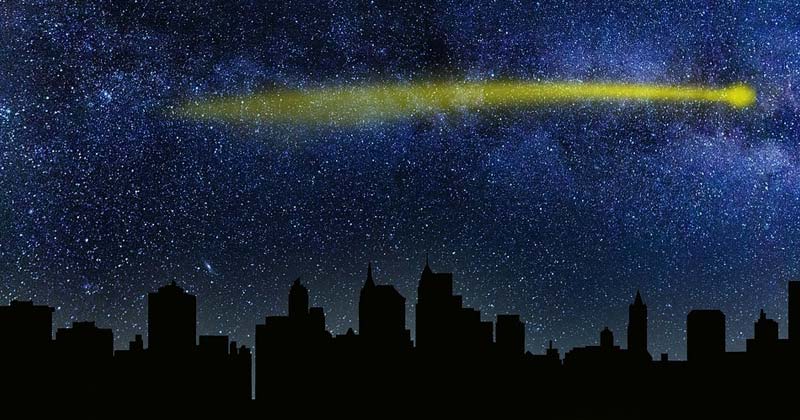In fact, meteorites and falling stars have the same origin. Both of them come from a meteoroid, a lump of rock that moves in its orbit around the sun. A meteoroid is a celestial body that is smaller than a few dozen meters. From this size onwards, one usually speaks of asteroids, the minor planets, or comets provided that the object near the sun has a tail.
But let’s stay with the meteoroids for now. There are very many of them. And every day many of these lumps and chunks rush towards the earth. They travel tens of thousands of kilometers per hour. If the meteoroids get into the earth’s atmosphere, they burn up. This creates a luminous phenomenon called a meteor or a shooting star. But it actually depends on the size.
Shooting stars delight observers
If the glowing meteoroid is only about a millimeter in size, then we perceive it as a shooting star. So shooting stars are tiny. And they only glow for an equally tiny moment. A meteoroid which is the size of a grain of rice can only be seen in the sky for a second when it enters the earth’s atmosphere. If the meteoroid is larger than ten millimeters, it glows so impressively on its way to earth that one speaks of a fireball.

The tiny meteoroids completely burn up in the earth’s atmosphere. But if it is a larger or particularly solid chunk, residues can be leftover. They then reach the ground. Strictly speaking, it is only mentioned when the celestial body has hit the earth, even if in fragments.
To understand why so many of these tiny meteors can be seen especially at particular times, you have to know where they come from. Meteoroids come from asteroids and comets. they are simply smaller parts of the larger heavenly bodies.
In the dust trail of a comet
A comet, made up of water ice, frozen gases, and dust, virtually thaws on the surface when it approaches the sun. Part of the frozen mass then evaporates, the comet is surrounded by a shell of volatile substances. Under the action of the solar wind, the countless particles of frozen gases and dust are carried away. This creates the comet-typical tail, which can be millions of kilometers long, and with it a cloud of meteoroid particles.

If the earth moves through a trail of dust left by a comet on its way around the sun, we can observe meteor streams as a cluster of falling stars. The best-known meteor shower is the Perseids. Every year around August 12th, the fragments of the comet Swift-Tuttle sparkle in the night sky. You can easily see a hundred falling stars in just an hour, given that the skies are clear.
Also Read – How Dangerous are Meteorites? Are they Nature’s Bullets for Us? Let’s find out.
But in the course of the year, other meteor streams come into our field of vision. The Leonids in November, the Geminids in December, the Quadrantids in January, and the Lyrids in April. Anyone who is superstitious and associates every falling star they see with a wish has plenty of opportunity for it. However, the space debris also burns and glows when it falls to earth and the difference is unnoticeable to the naked eye.


